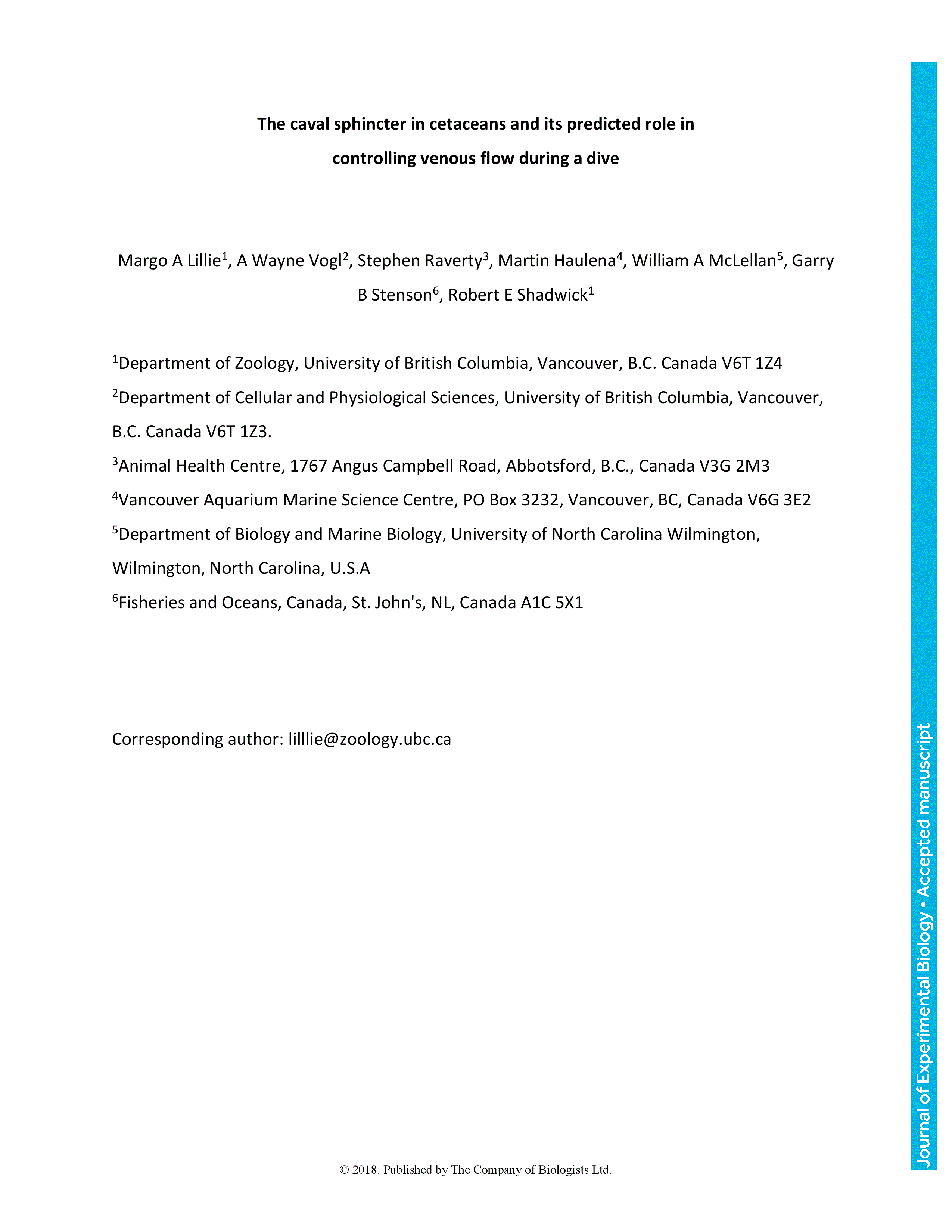A sphincter on the inferior vena cava can protect the heart of a diving mammal from overload when elevated abdominal pressures increase venous return, yet sphincters are reported incompetent or absent in some cetacean species. We previously hypothesized that abdominal pressures are elevated and pulsatile in fluking cetaceans, and that collagen is deposited on the diaphragm according to pressure levels to resist deformation. Here we tested the hypothesis that cetaceans generating high abdominal pressures need a more robust sphincter than those generating low pressures. We examined diaphragm morphology in seven cetacean and five pinniped species. All odontocetes had morphologically similar sphincters despite large differences in collagen content, and mysticetes had muscle that could modulate caval flow. These findings do not support the hypothesis that sphincter structure correlates with abdominal pressures. To understand why a sphincter is needed, we simulated the impact of oscillating abdominal pressures on caval flow. Under low abdominal pressures, simulated flow oscillated with each downstroke. Under elevated pressures, a vascular waterfall formed, greatly smoothing flow. We hypothesize cetaceans maintain high abdominal pressures to moderate venous return and protect the heart while fluking, and use their sphincters only during low-fluking periods when abdominal pressures are low. We suggest pinnipeds, which do not fluke, maintain low abdominal pressures. Simulations also showed retrograde oscillations could be transmitted upstream from the cetacean abdomen and into the extradural veins, with potentially adverse repercussions for the cerebral circulation. We propose that locomotion-generated pressures have influenced multiple aspects of the cetacean vascular system.
The caval sphincter in cetaceans and its predicted role in controlling venous flow during a dive
Currently Viewing Accepted Manuscript - Newer Version Available
- Split-screen
- Views Icon Views
- Open the PDF for in another window
-
Article Versions Icon
Versions
- Version of Record 07 June 2018
- Accepted Manuscript 01 January 2018
- Share Icon Share
-
Tools Icon
Tools
- Search Site
Margo A. Lillie, A. Wayne Vogl, Stephen Raverty, Martin Haulena, William A. McLellan, Garry B. Stenson, Robert E. Shadwick; The caval sphincter in cetaceans and its predicted role in controlling venous flow during a dive. J Exp Biol 2018; jeb.177212. doi: https://doi.org/10.1242/jeb.177212
Download citation file:
Advertisement
2023 JEB Outstanding Paper Prize shortlist and winner

The JEB Editors are delighted to announce the shortlisted authors for the 2023 JEB Outstanding Paper Prize. Read the winning paper - Tiny spies: mosquito antennae are sensitive sensors for eavesdropping on frog calls - by Hoover Pantoja-Sanchez and Brian Leavell from Ximena Bernal's lab at Purdue University, USA.
JEB Science Communication Workshop for ECRs

If you’re an early-career researcher interested in science communication and are attending the SEB Annual Conference in Prague this summer, come a day early and join the JEB Editors at a sci comm workshop to learn the key writing skills needed to promote your research to a broad audience beyond your peers (1 July at 14.30-17.30). Places are limited to 24 attendees, and applicants should apply through the SEB registration page by 30 April 2024.
Bridging the gap between controlled conditions and natural habitats in understanding behaviour

Novel technologies enable behavioural experiments with non-model species, in naturalistic habitats and with underexplored behaviours. In their Commentary, Scholz and colleagues discuss how to obtain a deeper understanding of the natural ecology and lifestyle of study animals.
Beluga metabolic measures could help save species

To help save animals from extinction, it’s important to understand what each species needs to survive. This led Jason John et al. to measure the metabolic rates of captive belugas to develop a ‘fish calculator’ showing that the whales need to eat ~23 salmon per day.
ECR Workshop on Positive Peer Review

Are you an ECR looking for tips on how to write concise, astute and useful manuscript reviews? If so, join the JEB Editors at a 2-hour JEB-sponsored Workshop on Positive Peer Review at the Canadian Society of Zoologists annual meeting in Moncton on 9 May 2024 at 13.00-15.00. There are 25 spaces for ECRs and selection is first come, first serve. To sign up, check the ECR Workshop box when you register for the CSZ meeting.



